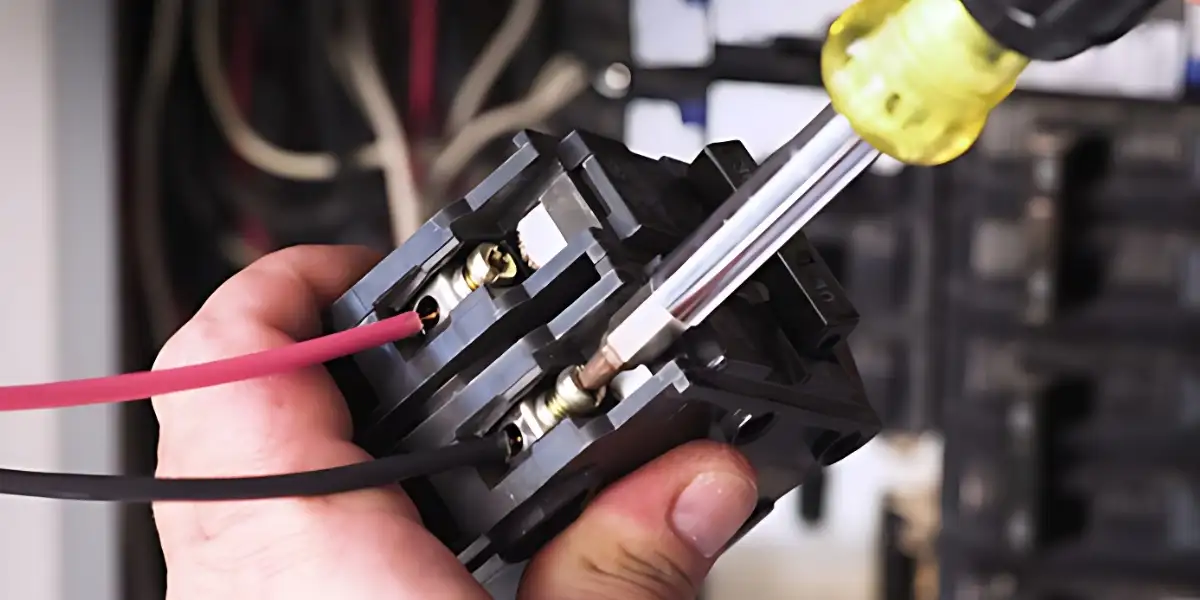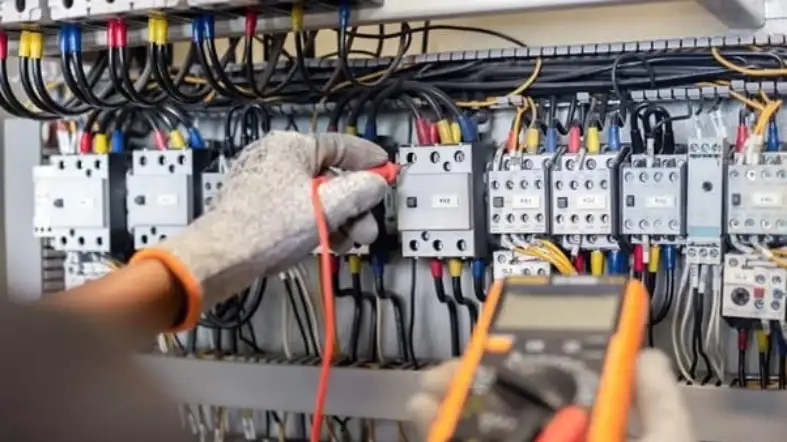Choosing the right size wire for a 30-amp circuit is more than just a technical requirement—it’s a safety necessity.
This article demystifies the complexities surrounding wire gauges, materials, and codes, helping you make an informed decision that ensures both electrical efficiency and safety.

What Size Wire for a 30-Amp Circuit?
The recommended wire size for a 30-amp circuit breaker is a minimum of 10-gauge wire. However, depending on the length of the wire and the appliances or devices you want to use in your circuit, you may need to use a heavier gauge wire.
30-amp Circuits Wire Size Chart:
| Maximum Amps | Gauge (Wire Size) |
|---|---|
| 7 | 18 |
| 10 | 16 |
| 15 | 14 |
| 20 | 12 |
| 30 | 10 |
| 40 | 8 |
| 55 | 6 |
| 70 | 4 |
| 95 | 2 |
Different Types of Wires Suitable for a 30-Amp Circuit
Copper Wires
Copper wires are commonly used in electrical wiring because they are good conductors of electricity. They are also relatively inexpensive and easy to work with.
Aluminum Wires
Aluminum wires are another option for electrical wiring. They are less expensive than copper wires but are not as good conductors of electricity. They are also more difficult to work with because they are less flexible than copper wires.
Stranded vs Solid Wires
Wires can be either stranded or solid. Stranded wires are made up of several smaller wires twisted together, while solid wires are made up of a single, solid piece of metal.
Stranded wires are more flexible and easier to work with than solid wires, but they are also more expensive.
Factors Influencing the Selection of 30-Amp Wire Size

There are several factors that can influence the selection of wire size for a 30-amp circuit. These include:
Type of Load (Continuous or Non-Continuous)
The type of load on the circuit can affect the selection of wire size.
A continuous load is one that operates for three hours or more at a time, while a non-continuous load operates for less than three hours at a time. Continuous loads require larger wire sizes than non-continuous loads.
Length of the Wire Run
The length of the wire run can also affect the selection of wire size. The longer the wire runs, the larger the wire size needs to be to prevent voltage drop.
Environmental Conditions
Environmental conditions such as temperature and humidity can affect the selection of wire size.
High temperatures can cause wires to overheat, so larger wire sizes may be needed in hot environments.
Local Electrical Codes and Standards
Local electrical codes and standards can also affect the selection of wire size. It’s important to check with your local building department to ensure that your wiring meets all applicable codes and standards.
Installation Method (Conduit, Open-Air, etc.)
The installation method can also affect the selection of wire size. Wires installed in conduit may require larger sizes than those installed in open air because conduit can trap heat and cause wires to overheat.
Budget Constraints
Budget constraints can also play a role in the selection of wire size. Larger wire sizes are more expensive than smaller sizes, so budget constraints may limit your options.
Special Equipment or Appliances Requirements
Special equipment or appliances may have specific requirements for wire size. It’s important to check the manufacturer’s specifications to ensure that you choose the right size wire for your needs.
Safety Considerations
Safety considerations should always be taken into account when selecting wire size. Choosing the right size wire can help prevent overheating and potential fire hazards.
How to Determine the Right Size Wire for 30 Amp
Understanding Amperage
First, let’s talk about amperage, which is how we measure the flow of electricity. Higher amperage means more electricity is flowing. For a 30-amp circuit, you’ll need a wire that can handle at least 30 amps.
Checking Wire Gauge
The thickness of a wire is known as its “gauge.” A lower gauge number means a thicker wire.
Thicker wires can handle more electricity safely. For a 30-amp circuit, most electricians recommend a 10-gauge wire.
Wire Material
Wires can be made of different materials, like copper or aluminum. Copper is the most commonly used and it’s a better conductor.
This means it lets electricity flow more easily. For a 30-amp circuit, a 10-gauge copper wire is a safe bet.
Wire Insulation
Wires also have an insulation layer. This is like a coat that keeps electricity from escaping. Make sure the insulation is rated for the voltage you’ll be using.
For most home applications, a wire with insulation rated at 600 volts is plenty.
Checking Local Codes and Standards
Each area has its own rules about electrical work. Check with your local electrical authority to make sure you’re using the right wire.
Length of the Circuit
The distance electricity has to travel can also affect the wire you choose. If the circuit is very long, you might need a thicker wire.
Consulting an Expert
Even though we’re learning a lot, it’s always good to ask an expert for help. An electrician can make sure you’ve picked the right wire for your 30-amp circuit.
Common Mistakes to Avoid When Choosing a Wire for a 30-Amp Circuit

Ignoring Wire Gauge
Wire gauge is a crucial factor when choosing a wire for a 30-amp circuit. The gauge number refers to the thickness of the wire.
A common mistake is to ignore this and choose a wire that’s too thin for the circuit. For example, using a 14-gauge wire for a 30-amp circuit is not safe.
Overlooking Temperature Ratings
Every wire has a temperature rating that indicates the maximum temperature it can safely operate at. Ignoring these ratings can lead to overheating and potential fire hazards.
For instance, if you’re installing a wire in a hot environment, you need a wire with a high-temperature rating.
Neglecting Local Codes and Regulations
Local codes and regulations often have specific requirements for electrical wiring. Failing to consider these can lead to non-compliance and potential safety issues.
For example, some local codes may require the use of conduits for certain types of wiring.
Using Aluminum Wires Instead of Copper Wires Without Proper Knowledge
While aluminum wires are less expensive than copper wires, they are not as good conductors of electricity and may require larger sizes.
Using aluminum wires without understanding these differences can lead to inefficient or unsafe electrical systems.
Not Considering the Length of the Wire Run
The length of the wire run can affect the efficiency of the electrical system. A common mistake is not considering this when choosing a wire size.
For example, if you have a long wire run, you may need to choose a larger wire size to prevent voltage drop.
How to Properly Install 30-Amp Wire
Safety Precautions
Before you begin, it’s important to take some basic safety precautions. Make sure the power is turned off at the main circuit breaker before you start working on the wiring. Wear protective gloves and eye protection to prevent injury.
Tools Needed
To install a 30-amp wire, you’ll need some basic tools, including wire strippers, a screwdriver, and a voltage tester.
Step-by-Step Guide
- Turn off the power at the main circuit breaker.
- Use a voltage tester to confirm that the power is off.
- Strip the insulation from the ends of the wires using wire strippers.
- Connect the wires to the appropriate terminals on the circuit breaker or receptacle.
- Tighten the screws on the terminals to secure the wires in place.
- Turn the power back on at the main circuit breaker.
- Use a voltage tester to confirm that the circuit is working properly.
FAQs
Can I use a smaller wire size for a 30-amp circuit if I’m only running it for a short distance?
No, it’s important to always use the appropriate wire size for the amperage rating of the circuit, regardless of the length of the wire run.
Can I use aluminum wires instead of copper wires for a 30-amp circuit?
Yes, aluminum wires can be used for 30-amp circuits, but they are not as good conductors of electricity as copper wires and may require larger sizes.
Do I need to use stranded or solid wires for a 30-amp circuit?
Either stranded or solid wires can be used for a 30-amp circuit. Stranded wires are more flexible and easier to work with than solid wires, but they are also more expensive.
Can I use a 12-gauge wire for a 30-amp circuit?
No, a 12-gauge wire is not recommended for a 30-amp circuit; you should use at least a 10-gauge wire.
Is copper better than aluminum for a 30-amp circuit?
Yes, copper is a better conductor of electricity and is generally preferred over aluminum for a 30-amp circuit.
Conclusion
Choosing the right size wire for a 30-amp circuit is important for ensuring that your electrical system operates safely and efficiently.
There are several factors that can influence the selection of wire size. By taking all of these factors into account and following proper installation procedures, you can ensure that your 30-amp circuit is wired correctly and safely.
